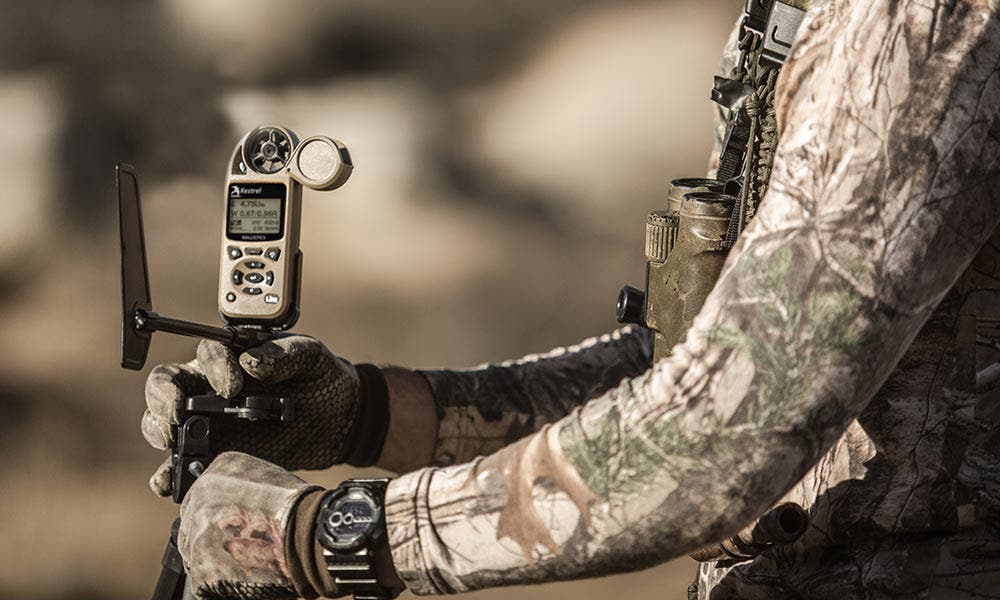Is Long-Range Hunting Becoming More Popular?

Increase in Popularity of Long-Range Hunting
If you follow hunting channels on various social media or even outdoor television, there’s a lot of long-range hunting content. In fact, there’s been an increasing interest in long-range hunting and long-range shooting over the last few years. Now, it’s important to point out that “long-range” can mean different things to different hunters. If you’re used to hunting whitetails in densely wooded areas out east or down south, a shot past 150 yards probably sounds extreme to you. Many western big game hunters may think it’s standard to be able to shoot out to 200 yards. And still, some mountain sheep hunters might consider shots out past 600 yards to be long-range. It’s all about your perspective and relative to what you’re used to hunting. With that being said, here are a few things to think about for long-range hunting scenarios.
Why Long-Range Hunting?
So why is it that long-range hunting is gaining in popularity these days? There are likely a few factors at play. First, the technology used in rifles, ammunition, and optics is getting better each year. As this technical performance bar keeps raising higher, the ability of a hunter to shoot at further distances also increases. With this, there are also a lot of long-range shooting ranges, where you can actually practice enough to get proficient with a given rifle setup. Second, because there is a lot of easily accessible long-range hunting content out there for people to consume, many more people are taking up the challenge. They may pack up and head west for hunting elk or mule deer, which inherently can pose some long-range shots.

Challenges of Long-Range Hunting
Shooting accuracy is always important under any conditions, but it can get much more complicated at extreme distances. There are many more influences from atmospheric/weather conditions as you extend the shooting distance, which can and will influence your bullet’s trajectory. For example, a 20 mph wind at 50 yards won’t do much to change your bullet’s trajectory, but you can bet it will shift things a bit over 500 yards. And at that distance, a slight shift or miscalculation can turn into a big miss downrange. For that reason, you need to be vigilant about adjusting for the weather conditions before you decide to pull the trigger on an animal at extreme distances. One great (and hopefully obvious) way to get better at that is by thorough practice in different types of conditions. If you understand how conditions will alter your shot, you can adjust accordingly from your past experience.
When it comes to long-range shots, we’d be remiss to not mention the question of ethics. Long-range shooting at a steel target is a lot of fun, but it’s a no-pressure situation. If you miss or make a bad shot, it’s just another opportunity to learn what you did wrong. But if you miss or make a bad shot on an animal, that’s another situation altogether. If you miss, you might blow your one opportunity at a great animal you traveled a long way to hunt. If you make a bad shot, it’s much worse. Hunters owe it to the animals they’re pursuing to make the best possible shot they can and put them down as quickly as possible. Put another way, if you can’t consistently group shots within a 4-inch circle at a given distance, it may be stretching your ability to shoot at that range. Therefore, you should not take that shot at an animal in the field. Keep practicing until you are proficient before you even think of shooting at an animal.
How to Effectively Hunt Long Range
Basically, it all boils down to practice and enough range time to make sure you’re confident with your setup and ability to make a good shot. You need to know your firearm and the cartridge you’re using. You need to know its ballistic performance at various long-range distances. You need to know how to read and interpret different atmospheric conditions and the effect they will have on your bullet trajectory. Most importantly, you need to know your maximum effective range. In the heat of the moment, it’s going to be very tempting to take a shot at a trophy animal even if it’s a little beyond your maximum range, but it’s just not worth the risk. Before you hunt, set a maximum distance that you will under no circumstances exceed. That way, you will only take shots you’re confident at making.

If you’re interested in this subject, Kestrel Ballistics has the tools you need to become a better long-range hunter. Primarily, that comes in the form of our ballistics weather meters. Our Kestrel 5700 helps gather comprehensive atmospheric measurements (e.g., wind speed, wind direction, altitude) quickly in the field and the built-in ballistics calculator will consider the distance to your target and provide the precise elevation and windage needed to make an accurate shot. All of this amazing technology fits within a small, handheld, easily-portable device. If you enjoy long-range hunting, using a weather meter like this will help you tremendously and will help you become a better long-distance shooter.









